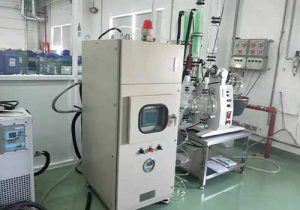cooling system with water
Cooling Systems with Water: A Comprehensive Guide
Introduction
Cooling systems that utilize water are essential for managing heat in various industrial, commercial, and residential applications. Water is an excellent heat transfer medium due to its high thermal conductivity and capacity, making it ideal for cooling processes. This article explores the working principles, types, applications, and benefits of water-based cooling systems, providing a detailed understanding of their functionality and importance.

Working Principles
Water-based cooling systems operate by absorbing heat from a process or environment and transferring it to water, which is then cooled and recirculated. The basic process involves:
Heat Absorption: Water absorbs heat from the source, such as machinery or air.
Heat Transfer: The heated water is transported to a cooling unit, such as a chiller or cooling tower.
Heat Dissipation: The heat is released from the water to the environment or another medium.
Recirculation: The cooled water is returned to the system to repeat the cycle.
Types of Water-Based Cooling Systems
Chilled Water Systems: Use chillers to cool water, which is then circulated through coils to absorb heat from air or processes. Commonly used in HVAC systems and industrial cooling.
Cooling Towers: Dissipate heat from water by evaporating a small portion of it, releasing heat to the atmosphere. Widely used in power plants and large industrial facilities.
Liquid Cooling Systems: Directly cool components or equipment by circulating water or a water-based coolant. Often used in data centers and high-performance computing.
Evaporative Cooling Systems: Use water evaporation to cool air, which is then circulated through the space. Common in industrial and agricultural settings.
Applications
Water-based cooling systems are used in a wide range of applications, including:

Industrial Processes: Cooling machinery and equipment in manufacturing and processing plants.
HVAC Systems: Providing cooling for commercial and residential buildings.
Data Centers: Managing heat generated by servers and IT equipment.
Power Plants: Dissipating heat from power generation processes.
Healthcare Facilities: Maintaining controlled environments in hospitals and laboratories.
Advantages
High Efficiency: Water’s high thermal conductivity and capacity make it an effective cooling medium.
Versatility: Suitable for a wide range of applications and environments.
Energy Savings: Water-based systems can be more energy-efficient than air-based systems, especially in large-scale applications.
Scalability: Can be easily scaled to meet the cooling demands of different processes and facilities.
Maintenance Practices
Regularly inspect and clean heat exchangers, coils, and cooling towers to ensure efficient heat transfer.
Monitor water quality and treat it to prevent scaling, corrosion, and biological growth.
Check for leaks and repair them promptly to maintain system performance.
Schedule professional maintenance to address potential issues and extend the system’s lifespan.

Use predictive maintenance technologies, such as IoT sensors, to monitor system health and prevent failures.
Energy Efficiency Considerations
Energy efficiency is a critical factor for water-based cooling systems. Implementing energy-saving measures, such as variable speed pumps, high-efficiency chillers, and optimized control systems, can significantly reduce energy consumption and operational costs. Additionally, using energy recovery systems to reuse waste heat can further enhance efficiency.
Environmental Considerations
The environmental impact of water-based cooling systems can be minimized by adopting sustainable practices, such as water conservation, using eco-friendly coolants, and implementing closed-loop systems to reduce water waste. Regular maintenance and proper disposal of coolants also contribute to sustainability. Businesses are encouraged to adopt energy-efficient technologies and practices to comply with environmental regulations and reduce their carbon footprint.
Conclusion
Cooling systems with water are essential for managing heat in various industrial, commercial, and residential applications. By understanding their working principles, types, and maintenance requirements, users can optimize the performance and sustainability of these systems. Whether for industrial processes, HVAC systems, or data centers, water-based cooling systems offer a reliable and efficient solution for maintaining optimal temperatures.
Related recommendations
most economical small heater
525What is the Most Economical Small Heater? The most economical small heater is a compact and energy-efficient heating device designed to provide warmth in small spaces while keeping energy consu...
View detailswater cooler with temperature control
675A water cooler with temperature control is a versatile and essential appliance that has found its place in numerous settings, from homes to large - scale industrial facilities. It offers the conve...
View detailsFeatures and Usage Methods of Closed High Temperature Heating Circulator
1744Features and Usage Methods of Closed High Temperature Heating Circulator The closed high-temperature heating circulator is the equipment used in the refrigeration and heating temperature con...
View detailshot oil heat transfer systems
385Hot Oil Heat Transfer Systems: A Comprehensive Guide Introduction Hot oil heat transfer systems are advanced thermal management solutions designed to provide efficient and consistent heating...
View details
 LNEYA Chiller
LNEYA Chiller






HelloPlease log in